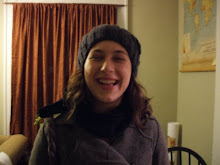Valley of the Wolves Iraq alerted me to a current wartime event which has been largely ignored by the American media. During the so-called "Hood Event," which has become famous in Turkey, Turkish soldiers, who were allied with NATO forces, were led out of their headquarters at gunpoint with hoods over their heads on suspect for terrorism. They were detained for sixty hours. This was the first time such an incident had ever taken place between the two NATO allies, the United States and Turkey. In the film, the Turkish soldiers are bewildered that people who quite recently had tea with them could force such inhumane humiliation upon them by putting bags over their heads.
The film also reenacts wartime events which have received more attention from the American media, such as the raid by American soldiers of an Iraqi wedding, which results in the massacre of a number of civilians. This scene alludes to allegations of a wedding party massacre in Mukaradeeb on May 19, 2004. Also, American soldiers are shown torturing detainees in Abu Ghraib prison, which includes a female soldier (in Sabrina Harman garb) making a human pyramid, referring to the Abu Ghraib torture and prisoner abuse. This scene is the first filmed depiction of actions by American soldiers at the Abu Ghraib prison.
During the scene where the American soldiers' captives are being held in a semi trailer, one soldier tells another that the prisoners might die of suffocation because there is no air supply. The other soldier responds by shooting hundreds of bullet-holes into the trailer. He then says that now they won't die of suffocation. The captives are shown screaming for help as they collapse in a bloodbath. A similar event is reported by the American media to have occurred in Afghanistan after the battle for Mazari Sharif on November 9, 2001, with Taliban soldiers in the trailer and soldiers of the Afghan Northern Alliance as their guardians. During the film, the American soldiers arrive with their trailer of massacred prisoners at an American Army hospital, where an Army doctor scolds the solders for not leaving the prisoners' organs intact. It is revealed that this doctor is in the business of removing organs from injured civilian prisoners to sell to rich people in New York, London, and Tel Aviv.
While the film's portrayal of actual events made me more conscious of the impact of the U.S. invasion and continued occupation of Iraq on public opinion in Turkey, it also over dramatized certain events and placed blame on American soldiers for acts they have not committed, such as the containment trailer massacre. Still, events such as the "Hood Event" and Abu Ghraib prison torture and abuse scandal ought to continue to be publicized. Films such as this raise the question, "What ought to be the role of fictional film in reenacting controversial wartime events? Should filmmakers remain loyal to the truth (at least as we know it)? Or should they fictionalize real events to get at a larger truth?" It seems that the important thing is that we as viewers remain cautious while watching films (fictional and documentary) and that when we are presented with new information, we ask ourselves, "Is this the whole story?"
Even Valley of the Wolves Iraq's scriptwriter, Bahadir Ozdener, has defined the film by saying, "Our film is a sort of political action. Maybe 60 or 70 percent of what happens on screen is factually true. Turkey and America are allies, but Turkey wants to say something to its friend. We want to say the bitter truth. We want to say that this is wrong."


No comments:
Post a Comment